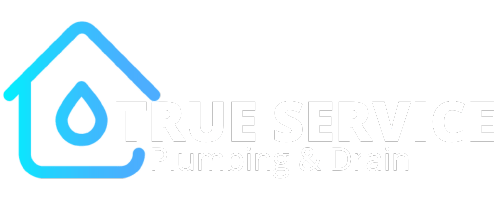When it comes to home plumbing, plumbing trap types play a crucial role in maintaining a clean and odor-free household.
These small but essential components prevent sewer gases from entering your home while allowing wastewater to flow smoothly.
Understanding the different types of plumbing traps can help homeowners maintain their plumbing systems and avoid potential issues like clogs, leaks, and unpleasant odors.
In this guide, we’ll break down what plumbing traps are, why they matter, the various types available, and how to maintain them effectively.
Whether you’re dealing with an old system or planning an upgrade, knowing your plumbing traps is key to a hassle-free home.
What is a Plumbing Trap?
A plumbing trap is a curved section of a drainpipe designed to hold a small amount of water.
This water seal prevents sewer gases from traveling back into your home while still allowing wastewater to pass through.
How Do Plumbing Traps Work?
- Every time you use a sink, toilet, or shower, water flows through the drain and into the trap.
- A small amount of water remains in the trap, creating a barrier that blocks sewer gases.
- The next time the fixture is used, new water flushes through, replacing the old water in the trap.
Without a properly functioning trap, unpleasant odors and harmful gases can seep into your home, creating health hazards and discomfort.
Why are Plumbing Traps Important?
1. Prevents Sewer Gas Backflow
Sewer gases contain harmful substances like methane, ammonia, and hydrogen sulfide, which can be hazardous to health.
A plumbing trap acts as a barrier, keeping these gases out of your living space.
2. Helps in Waste Management
Plumbing traps catch small debris that might otherwise cause blockages further down the line. This is especially useful in sinks and bathtubs.
3. Required by Building Codes
Most local building regulations mandate the use of plumbing traps in drainage systems to ensure safety and hygiene in homes and commercial spaces.
4. Prevents Pest Infestation
Without a properly installed trap, insects and small rodents from the sewer system can make their way into your home through drain pipes.
Common Types of Plumbing Traps
There are various types of plumbing traps, each designed for specific applications. Here’s a breakdown of the most common ones:
P-Trap (Most Common in Modern Homes)
- Found in kitchen and bathroom sinks.
- Named for its shape, which resembles the letter “P.”
- Easy to clean and widely used due to its reliability and effectiveness.
S-Trap (Common in Older Plumbing Systems)
- Similar to a P-trap but with a more pronounced curve.
- More prone to siphoning issues, which is why they are being phased out in modern plumbing codes.
Bottle Trap (Space-Saving Option for Small Bathrooms)
- Found in wall-mounted sinks.
- Compact and aesthetically pleasing but requires regular maintenance.
Drum Trap (Common in Bathtubs and Older Homes)
- Holds a larger amount of water, making it more effective at blocking sewer gas.
- Bulkier and harder to clean, leading to its gradual phase-out in modern plumbing.
Bell Trap (Used in Outdoor Drains and Floor Drains)
- Features a bell-shaped cover that allows water to drain while trapping gases.
- Often used in garages, basements, and patios.
Grease Trap (Essential for Kitchens with Heavy Cooking Use)
- Installed in kitchens to prevent grease from clogging the main drainage system.
- Frequently used in commercial kitchens but also beneficial for residential properties with high grease output.
Trap Primers and Their Role
- Trap primers automatically add water to traps to prevent them from drying out.
- Essential for floor drains that are rarely used, such as basement or garage drains.
When Should a Plumbing Trap Be Replaced?
Plumbing traps are durable, but they don’t last forever. Here are signs that it’s time for a replacement:
- Foul odors – If you notice a persistent sewer smell, the trap may be failing.
- Slow drainage – Indicates a blockage or buildup of debris.
- Visible leaks – Water pooling around the trap means it needs immediate attention.
- Cracks or corrosion – Over time, materials degrade, requiring replacement.
How to Clean and Maintain Plumbing Traps
Keeping your plumbing traps clean helps prevent clogs and ensures proper drainage. Here’s how you can maintain them:
Step-by-Step Guide to Cleaning a P-Trap
- Place a bucket under the trap to catch any water or debris.
- Unscrew the connections using a wrench.
- Remove the trap and empty any debris inside.
- Clean with warm water and a brush.
- Reattach the trap and run water to check for leaks.
Regular cleaning prevents buildup and extends the life of your plumbing system.
Plumbing Trap Installation: DIY or Hire a Pro?
DIY Installation
If you’re handy, replacing a simple P-trap is a manageable DIY task. With the right tools, you can install a new trap in under 30 minutes.
When to Call a Professional
- Your home has an outdated plumbing system that requires modifications.
- You’re dealing with frequent clogs or sewer gas smells.
- If installation involves cutting pipes or rerouting drain lines.
Hiring a professional plumber ensures the job is done correctly and up to code, preventing future plumbing issues.
Conclusion
Understanding plumbing trap types is essential for maintaining a well-functioning plumbing system.
From preventing sewer gas leaks to avoiding costly repairs, these small but critical components keep your home safe and hygienic.
Regular maintenance and timely replacements help ensure a hassle-free plumbing experience.
If you suspect an issue with your plumbing traps or need professional assistance, our experts at True Service Plumbing are here to help.
Plumbing Trap Installation & Repair with True Service Plumbing
When it comes to plumbing trap maintenance and installation in Toronto and the GTA, True Service Plumbing is your trusted partner.
Our skilled professionals handle everything from diagnosing trap issues to expert repairs and replacements, ensuring your home’s plumbing remains in top condition.
Dealing with sewer gas smells or slow drains? Our team is ready to provide fast and reliable solutions.
Don’t let plumbing problems disrupt your home. Contact True Service Plumbing today for expert plumbing services tailored to your needs.


